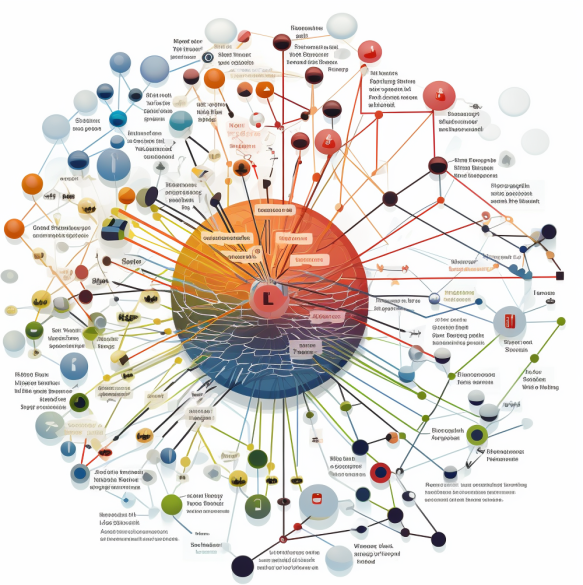
Today’s hybrid-everything environments generate enormous amounts of data, in numbers that are hard to understand and to visualise. In 2020, the estimate of data created and processed in different ways was around 59 zettabytes.

Each zettabyte is a trillion gigabytes, and by 2025, the World Economic Forum predicts the total number to reach an overwhelming 175 ZB
Meanwhile, the number of Internet of Things (IoT) connected devices continues to steadily rise.

Data sources are everywhere, including organisations’ networks which are becoming increasingly complex as they’re architected to meet users’ business needs.
It’s one thing to have huge volumes of data, but quite another to make it work for you. Yet the last thing can be absolutely crucial to get right.
Pankit Mehta, NEC’s National Portfolio Manager, terms the situation “drowning in data yet starving for insights.”
Today’s network complexity makes it harder to gain insights
To illustrate the issue in network context, Mehta uses a graphic which shows the five domains with different stages that Mehta said can capture data for valuable insights, when users access applications and information.

“When there is no management to pull that data and give some meaning to it, that’s what I mean by ‘drowning in data’,” Mehta said.
“Today’s networks are complex, and there are so many moving parts,” he added.
“Earlier on, it was pretty simple: data wasn’t in the cloud, it was in the data centre and users were not remote. They were in the office, and we didn’t have transit networks,” Mehta said.
In that situation, analysing data to gain insights on user behaviour, application performance, network performance, and monitor for errors is so much more, Mehta said.
“It’s just the sheer quantity of it, which makes it difficult. So unless you don’t have visibility and insights, you can’t turn it into action. he added.
AI and ML to the rescue
Processing masses of data is literally what computers are good at, and adding artificial intelligence and machine learning to the mix can help make sense of the information flows, Mehta said.
Take today’s complex networks, with all the moving parts in them; Mehta said that AI and ML can add visibility for them, pinpoint problem areas, and help resolve faults much quicker than in the past.
AI and ML can also help with benchmarking user application performance.
“If there is, say, a user base in Perth that’s trying to access Microsoft’s Office 365, they are complaining about poor performance, there would be some sort of a benchmark not only within the organisation but outside as well, like how long should it take: a second, two seconds, half a second, or few milliseconds?
Mehta explained that administrators can look at the performance history, analyse it and see for example that during seven to nine in the evening, performance is the worst for a certain user.
This would normally be a lengthy process, but it can be much faster with AI and ML, Mehta said.
“AI and ML can do automated root cause analysis, which would speed up issue resolution greatly compared to somebody spending a few hours a day trying to understand the root cause. It can be done in a very graphical manner,” Mehta said.
In that context, AI and ML can improve user experience and help employees perform better.
Not only that, but predictive analysis of data with AI and ML can anticipate problems, allowing administrators to deal with them before they happen.
What’s more, NEC’s Full Stack Observability Solution powered by Cisco provides visibility and insights for complex networks where users move from being behind corporate firewalls, to working remotely.
Reap rewards with insights
Once customers are shown NEC’s solutions that help provide insights from data, Mehta said they quickly realise they have valuable, actionable information at hand.
Broadly, there are three use cases, Mehta noted.
One, administrators want visibility into pure network performance where the fault is for example from an end user all the way to the application.
The second use case NEC sees from customers is when they’re seeking to better identify where spending on cloud infrastructure goes – and how to reduce that operational expenditure
The third and last one is for monitoring and understanding application performance itself.
All of the above depends on the stage of maturity the customer is at, he explained.
Ultimately, NEC is finding that when they talk to customers, deliver proof- of-concept (PoC / PoV), they can see the money benefits in almost real-time.
“It’s not a hard sell,” Mehta concluded









